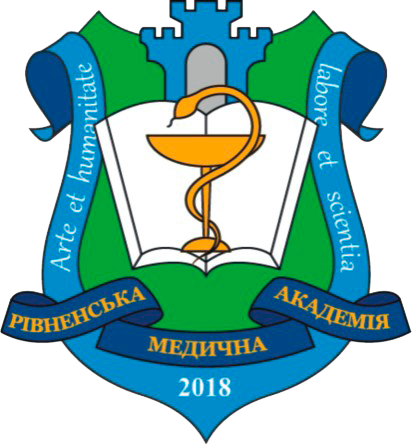HYPERURIKEMIA IS NOT ONLY GOUT
DOI:
https://doi.org/10.32782/health-2024.1.5Keywords:
asymptomatic hyperuricemia, arterial hypertension, menopausal syndromeAbstract
The severity of gout and the risk of its occurrence largely depend on the duration and degree of hyperuricemia (DH). However, the vast majority of patients with asymptomatic DH do not have clinical signs of gout. There is substantial evidence that asymptomatic DH is pathogenetically associated with cardiovascular disease, including hypertension, especially in postmenopausal women. The purpose of the study was to analyze the features of the course of hypertension in combination with the menopausal syndrome and to evaluate the relationship of asymptomatic DH depending on the clinical course of the menopausal syndrome. We examined 105 women with stage II hypertension combined with menopausal syndrome, who made up the main group. The control group – 20 patients with hypertension stage II without manifestations of menopausal syndrome. The average age of patients in the main group was 51±1.8 years, the control group was 52±2.4 years. According to the anamnesis, the duration of hypertension in the examined patients of the main group was 7.8±1.1 years, in patients of the control group – 7.9±1.3 years. All patients were in the menopausal period. The results of the study demonstrate that the presence of menopausal syndrome in women not only subjectively, but also objectively worsens the clinical course of hypertension. It was established that the level of office systolic and diastolic blood pressure (BP), changes in the daily profile of BP, and an increase in the frequency of hypertensive crises depend on the severity of the course of the menopausal syndrome and are more pronounced in patients with a more severe course. It is shown that in this category of women there is an increase in the level of asymptomatic DH with an increase in the severity of the menopausal syndrome. Evidence of the relationship between asymptomatic DH and the features of the course of the menopausal syndrome in women with hypertension dictates the need for its timely diagnosis and correction.
References
Подагра / В.М. Коваленко та ін. Київ : Моріон, 2022. 72 с.
Кушніренко С.В., Савицька Л.М., Бевзенко Т.Б., Ротова С.О., Лисянська О.Ю. Безсимптомна і симптомна гіперурикемія: інноваційна стратегія лікування. Сімейна медицина. 2023. № 3(105). С. 63–70.
Zhu Y, Pandya BJ, Choi HK. Comorbidities of gout and hyperuricemia in the US general population: NHANES 2007–2008. Am J Med. 2012. № 125(7). P. 679–687. DOI: 10.1016/j.amjmed.2011.09.033, indexed in PubMed: 22626509.
Chen-Xu M., Yokose C., Rai S.K. et al. Contemporary Prevalence of Gout and Hyperuricemia in the United States and Decadal Trends: The National Health and Nutrition Examination Survey, 2007–2016. Arthritis Rheumatol. 2019. № 71(6). Р. 991–999. DOI: 10.1002/art.40807.
Kumar A.U.A., Browne L.D., Li X. et al. Temporal trends in hyperuricaemia in the Irish health system from 2006–2014: A cohort study. PLoS One. 2018. № 13(5). Р. 198–197. DOI: 10.1371/journal.pone.0198197.
Juraschek S.P., Miller E.R. 3rd, Gelber A.C. Body mass index, obesity, and prevalent gout in the United States in 1988–1994 and 2007–2010. Arthritis Care Res (Hoboken). 2013. № 65(1). Р. 127–132. DOI: 10.1002/acr.21791.
Jamnik J., Rehman S., Blanco Mejia S. et al. Fructose intake and risk of gout and hyperuricemia: a systematic review and meta-analysis of prospective cohort studies. BMJ Open. 2016. № 6(10). Р. 1–9. DOI: 10.1136/bmjopen-2016-013191.
Choi HK, McCormick N, Yokose C. Exscess comorbitiesin gout: the causal paradigm and pleiotropic approaches to care. Nat Rev Rheumatol. 2022. № 18(2). Р. 97–111.
Perez-Ruiz F., Becker M.A. Inflammation: a possible mechanism for a causative role of hyperuricemia/gout in cardiovascular disease. Curr Med Res Opin. 2015. № 31(Suppl 2). Р. 9–14. DOI: 10.1185/03007995.2015.1087980.
Khanna P., Johnson R.J., Marder B. et al. Systemic Urate Deposition: An Unrecognized Complication of Gout? J Clin Med. 2020. № 9(10). Р. 3204. DOI: 10.3390/jcm9103204.
Mumford S.L., Dasharathy S.S., Pollack A.Z. et al. Serum uric acid in relation to endogenous reproductive hormones during the menstrual cycle: findings from the BioCycle study. Human Repr. 2013. № 28(7). Р. 1853–1862.
Nicholls A., Snaith M.L., Scott J.T. Effect of oestrogen therapy on plasma and urinary levels of uric acid. Br. Med. J. 1973 № 1(5851). Р. 449–451.
Hak A.E., Choi H.K. Menopause, postmenopausal hormone use and serum uric acid levels in US women–the Third National Health and Nutrition Examination Survey. Arthritis Res. Therapy. 2008. № 10(5). Р. 116.
Zitt E, Fischer A, Lhotta K, et al. Sex- and age-specific variations, temporal trends and metabolic determinants of serum uric acid concentrations in a large population-based Austrian cohort. Sci Rep. 2020. №. 10(1). Р. 7578. DOI: https://doi.org/10.1038/s41598-020-64587-z.
Mancia G., Kreutz R., Brunstrom M. et al. 2023 ESH Guidelines for the management of arterial hypertension. The Task Force for the management of arterial hypertension of the European Society of Hypertension Endorsed by the European Renal Association (ERA) and the International Society of Hypertension (ISH). J. Hypertens. 2023. № 41(12). Р. 1874–2071. DOI: 10.1097/HJH.0000000000003480.
Bombelli M, Ronchi I, Volpe M et al. Prognostic value of serum uric acid: new-onset in and outof-office hypertension and long-term mortality. J Hypertens 2014. № 32 (6). Р. 1237–1244. DOI: 10.1097/HJH.0000000000000161, indexed in PubMed: 24675682.
Grayson PC, Kim SY, LaValley M et al. Hyperuricemia and incident hypertension: a systematic review and metaanalysis. Arthritis Care Res (Hoboken) 2011. №63 (1). Р. 102–10. DOI: 10.1002//acr.20344, indexed in PubMed: 20824805.
Williams B, Mancia G, Spiering W, et al. 2018 ESC/ESH Guidelines for the management of arterial hypertension. European Heart Journal. 2018. № 39(33). Р. 3021–104. DOI:10.1093/eurheartj/ehy339.
Perez-Ruiz F, Marimon E, Chinchilla SP. Hyperuricaemia with deposition: latest evidence and therapeutic approach. Ther Adv Musculoskelet Dis. 2015. № 7(6). Р. 225–233. DOI: 10.1177/1759720X15599734.
Kim K.Y., Shumacher H.R. et al. A literature review of epidemiology and treatment in acute gout. Clin.Ther. 2003. № 25(6). Р. 1593–1617.





